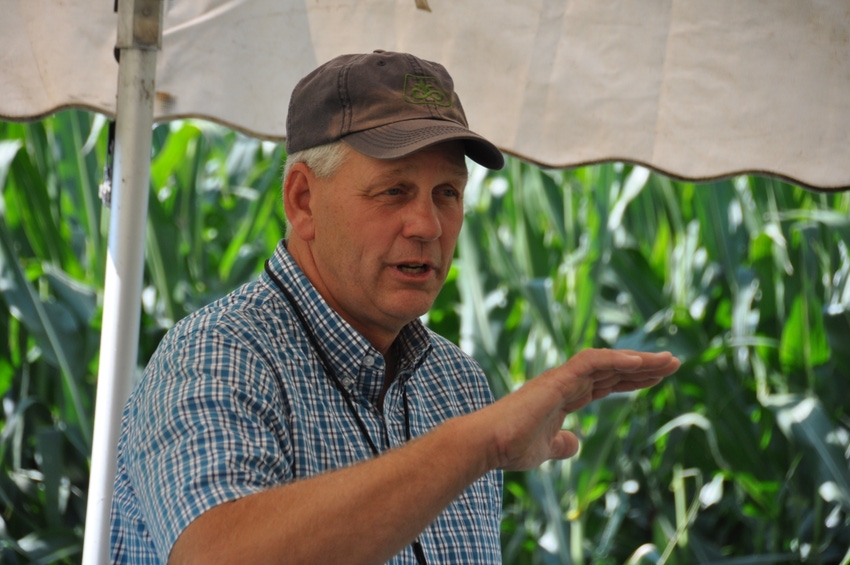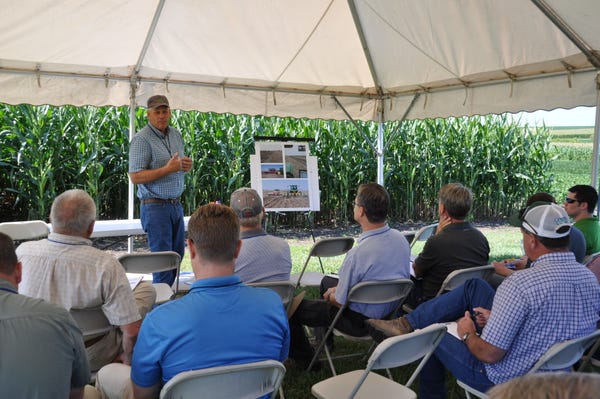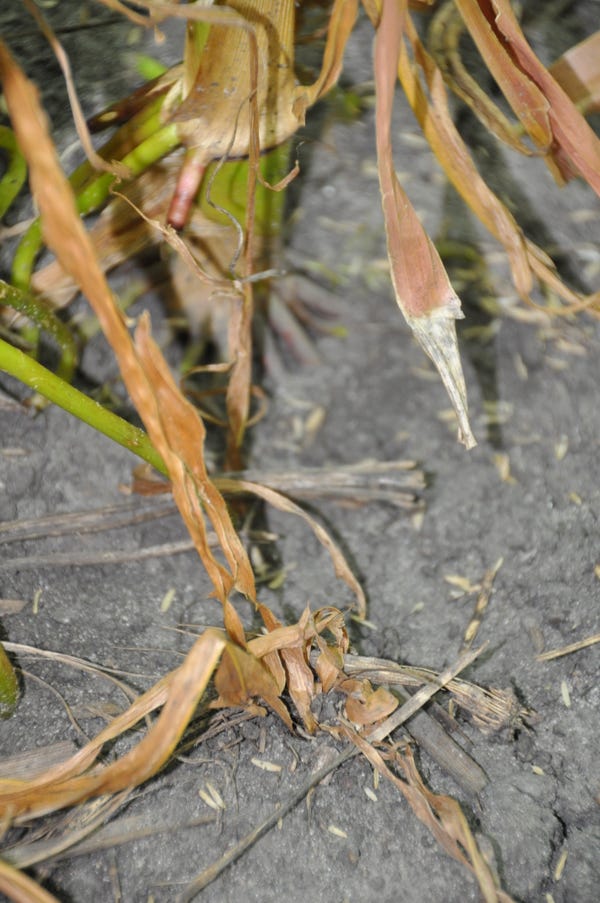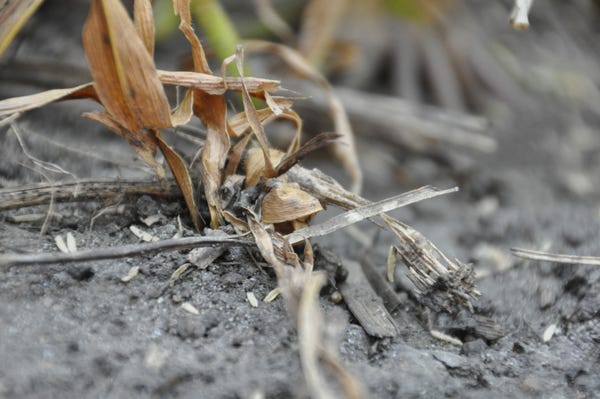November 2, 2018

----------
Think Different
Dean Sponheim has a different definition of mellow soil than he did when he tilled it. He no longer wants the fine crumb look and feel; instead, he wants a water-absorbent, more blocky structure that looks and acts more like a sponge than soup after a rain. Just by walking on his corn and soybean ground that’s been strip tilled for 18 years, he can tell it’s totally different than ground with full width tillage.
-----------
Dean Sponheim was still moldboard plowing on his northern Iowa farm in 1999, when he modified an old anhydrous bar to build strips. “It was primitive equipment, but I noticed there was no soil crusting in those strips. I compared the strips against chisel plowed ground for the next five years. The results convinced me to partner with a neighbor to build a strip till machine,” Sponheim says.
He started a custom strip till business that year in a part of the state where few farmers were sold on either strip till or no-till. Now, Dean and his son Josh have two strip till machines and plant strip till and no-till on 8,000 acres. “We get three to five new customers every year, and I think people seeing it work for us has helped prompt 80,000 acres of strip till and no-till in this area,” Sponheim says.

Northern Iowa farmer Dean Sponheim told farmers and advisers how strip till, no-till and cover crops in his operation have expanded the 4R’s of nutrient management into a 4R-Plus system of conservation management.
Slow transition to no-till
“We’re using strip till as a transition to no-till now,” Sponheim says. “I think you give up yields for five to seven years if you go straight to no-till on our soils from full width tillage. But I can guarantee similar yields with strip till.” This past year, about a fourth of their land was no-till.
When he made the switch to strip till in 1999, about 75% of Sponheim’s land was corn on corn. Now he alternates strips of corn with strips of soybeans in a corn-soybean rotation. Despite the heavy residues that came with corn on corn and continue with high corn yields in his corn-soybean rotation, Sponheim isn’t concerned about residue buildup. “I’d say 15 to 20% of my residue is underground before I harvest corn. When corn plant leaves begin to dry, the earthworms immediately drag them into the ground,” Sponheim says. “My agronomist refused to go into my fields at night—he said he was afraid he’d be sucked under by the earthworms. It was a joke, but it underscores to me how noticeable their soil-building work is.”

Cover crop business growing
Sponheim’s first cover crops were flown on in 2012. Now, growing their own cover crop seed, they contract to apply cereal rye cover crops for other farmers—last year they applied 6,000 acres with their no-till drill and coordinated aerial applications on 13,000 acres. He thinks he’ll reach his goal of 8,000 acres applied with a drill and 16,000 acres aerial application this year.
“Another of my goals is to get to 1,000 acres of cereal rye for seed. If we did that, we’d need 300 other suppliers like us to get enough seed to cover the 12 million acres called for in Iowa’s Nutrient Management Strategy,” Sponheim says.
Sponheim says it’s pretty easy to get started with strip till, no-till, and cover crops. “You just need to change the mindset,” he says. That’s what he’s helping do as the landscape turns from black to green and gold in his part of the world.

Corn leaves tucked into the ground is the work of earthworms. Sponheim says as much as 20% of his corn leaves disappear underground before harvest through earthworm middens to underground channels, building soil structure and increasing water infiltration.
Don’t forget the “Plus” with 4R
Sponheim commented on his transformation to strip till and no-till at a 4R Plus Field Day on the Iowa State University FEEL (Field Extension Education Laboratory) farm in July. The event was sponsored by the Iowa Soybean Association, the Nature Conservancy and other 4R Plus members.
The 4R’s of nutrient management—the right nutrients in the right amount, in the right place at the right time—have been touted for years as a way to responsibly manage crop nutrients for optimum crop use and minimum impact on the environment. While the 4R concept is sound, even if all farmers practiced it to its fullest, it’s not going to be enough to help meet the goals of Iowa’s Nutrient Reduction Strategy. Nutrient application in crop fields can reduce nitrogen loads by only about 10% of what’s needed.
That’s why 40 organizations have come together in Iowa to promote 4R Plus. “The Plus is conservation practices,” says Greg Wandrey of the Nature Conservancy, leader of the promotional effort. “We don’t suggest any particular practice—we’re just trying to promote an awareness of all the practices available, so farmers and their advisors can make decisions.”
About the Author(s)
You May Also Like




